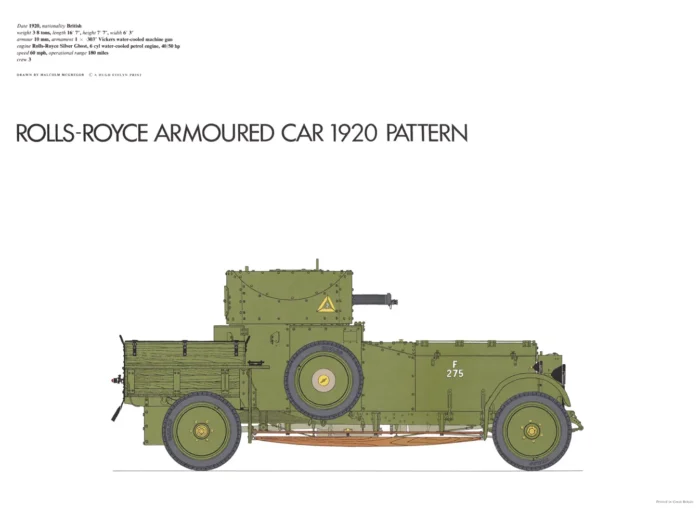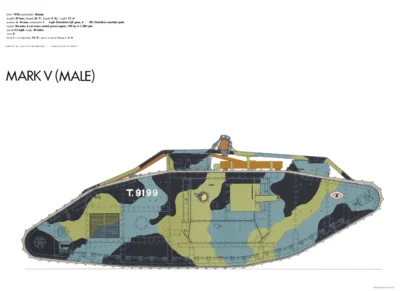Rolls-Royce Armoured Car (1920 Pattern)
£15.00
Rolls-Royce Armoured Car (1920 Pattern) (scroll down for a more detailed Description)
Published 1967 by © Hugh Evelyn Limited; drawn by Malcolm McGregor
Size: c. 47.5 x 34.5 cm [18 ½″ x 13 ½″] may vary slightly from printers’ cut 50 years ago
Printed on white cardstock weighing 140 g/sm2
Print is LARGE size – shipping is the same for 1 to 10 prints (based on largest print size in your order) – see Shipping & Returns
In stock
Description
Using their own cars, one a Rolls-Royce, Commander Charles Sampson commanding a small group of RNAS in France in 1914 demonstrated the value of armoured cars. Patrolling round the Dunkirk airfields, their speed enabled them to harass enemy flanks in the ‘Race to the Sea’. This caught Churchill’s imagination. The Admiralty commandeered 100 Rolls-Royce chassis. An armoured body was designed with a turret to protect the gunner. Armour plate covered the car, armoured doors the radiator. A Vickers water-cooled machine gun constituted the armament and the crew comprised three men, although usually only two were carried. The stalemate of trench warfare provided little opportunity so they were dispersed to German West Africa, Egypt and Gallipoli, where they achieved their fame. The quality of Henry Royce’s engineering was tested to the full and apart from battle damage they suffered no breakdowns. The most famous exponent of the Rolls was T. E. Lawrence, who used nine cars for nine months during the Arab revolt against the Ottoman Turks. In 1921 Rolls armoured cars began to replace the Peerless cars in Ireland. In 1926 both types were used to escort convoys of lorries to and from the docks during the General Strike. Some cars were sent to Iraq, and a new Rolls was designed to operate in India. The last of the Rolls-Royce armoured cars was introduced in 1924. The hull and turret were re-designed, and heavier commercial-type wheels were fitted. Although mainly used for training, some cars were still in service when the Second World War opened. The 11th Hussars were equipped with them in Libya in 1940. These were modified by the substitution of open-top turrets carrying a Boys anti-tank rifle and a smoke discharger. The Silver Ghost had served its country well for over twenty years in two world wars.
Additional information
| Weight | 4.0229 kg |
|---|---|
| Dimensions | 51.5 × 39.5 cm |





